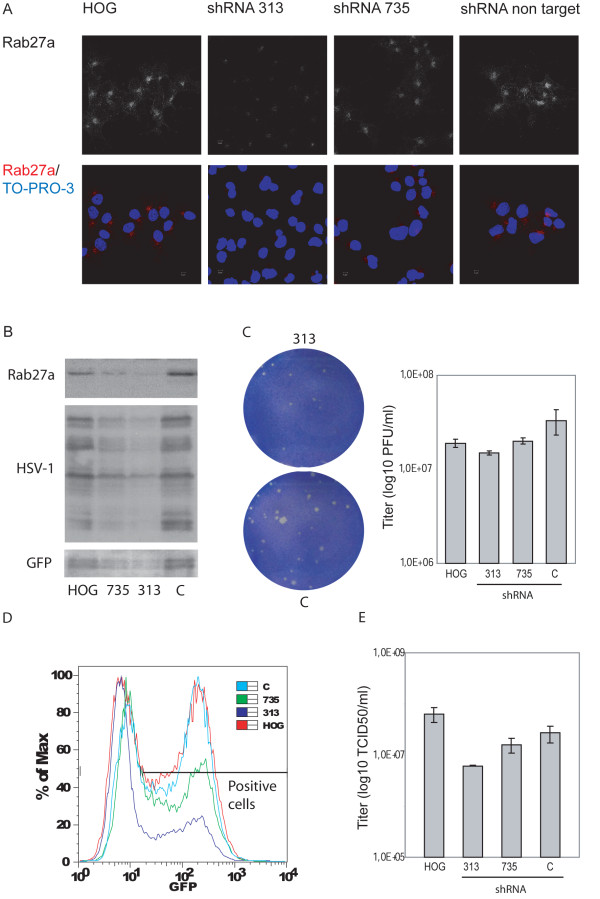Figure 7.
Effect of Rab27a depletion on HSV-1 infection. HOG cells mock-transfected or transfected with Rab27a-silencing shRNA-313 or shRNA-735, and shRNA non target control, were fixed and processed for confocal immunofluorescence analysis with polyclonal anti-Rab27a antibody. As images show, shRNA-313 induced an efficient knockdown of Rab27a while shRNA-735 produced a weaker effect (A). Equal number of cells were subjected to SDS–PAGE and analyzed by immunoblotting with anti-HSV-1 and anti-GFP antibodies. In Rab27a-depleted cells, a significant decrease in viral-associated GFP signal can be observed (B). Plaque assay shows a drastic reduction in plaque size and a decrease in the viral production determined by the number of plaque forming units (p.f.u.) per ml in silenced shRNA-313 cells compared to control cells (C). Silenced cells and controls infected at a m.o.i. of 1 with K26GFP were processed for flow cytometry, analyzing fluorescence of GFP (D). Percentage (%) of max designates the number of cells relative to the maximum fraction. For each fluorescence intensity within positive cells, the percentage of silenced cells corresponding to shRNA-313 and 735 is considerably lower than controls. Data are representative of 3 independent experiments. E. Rab27a-depleted cells and controls were infected at a m.o.i. of 0.5 with HSV-1. 18 h p.i., viral titers were determined by TCID50. Virus yield was significantly reduced in shRNA-313 silenced cells.

